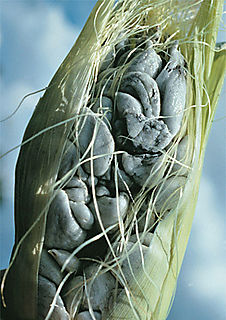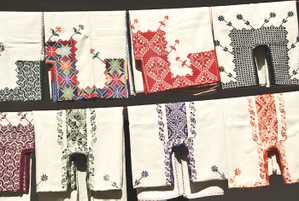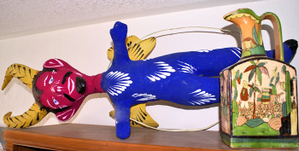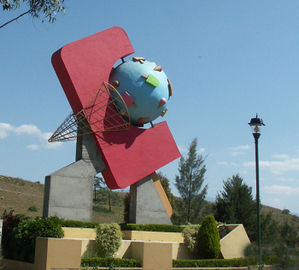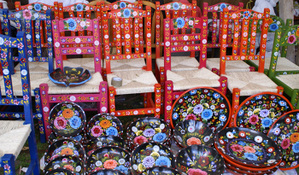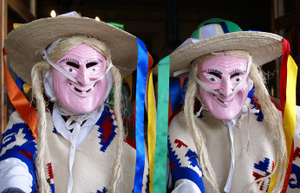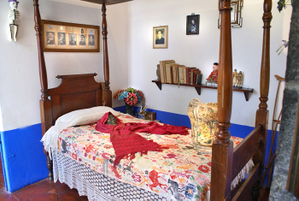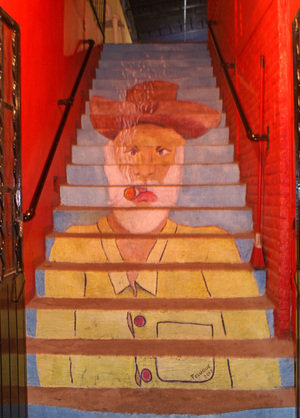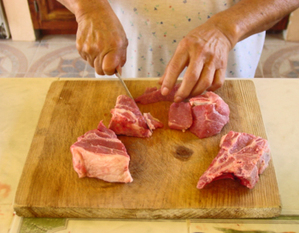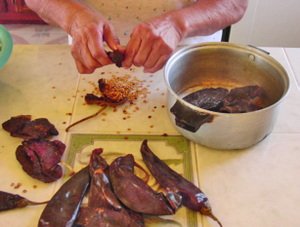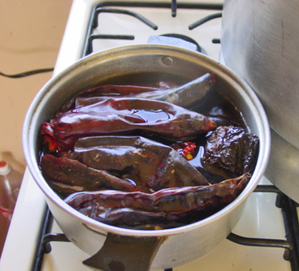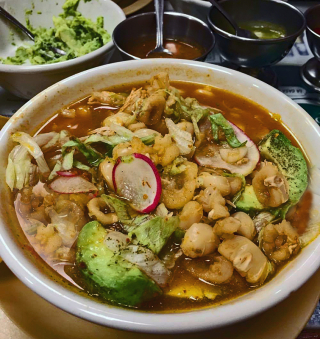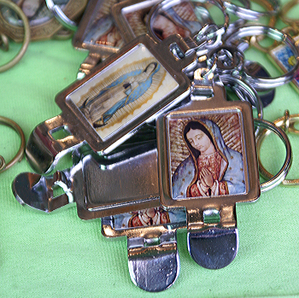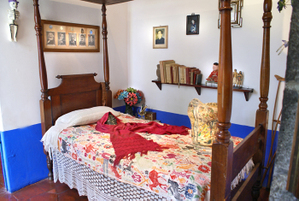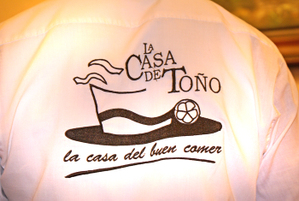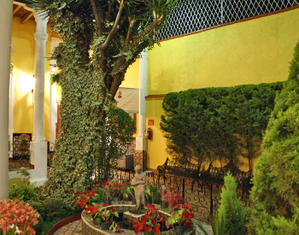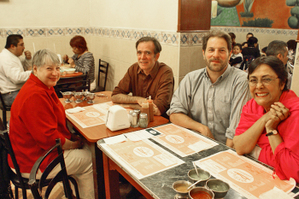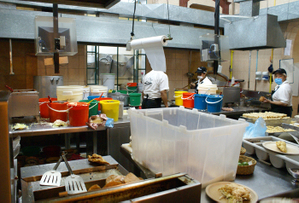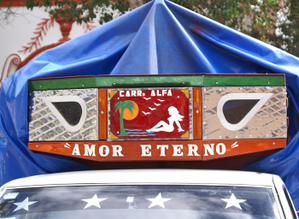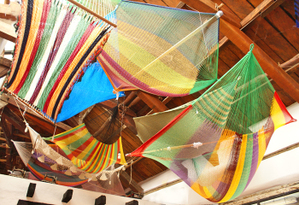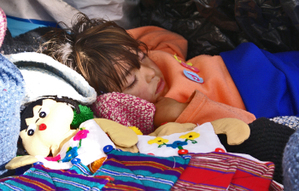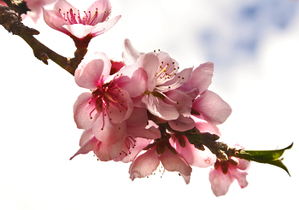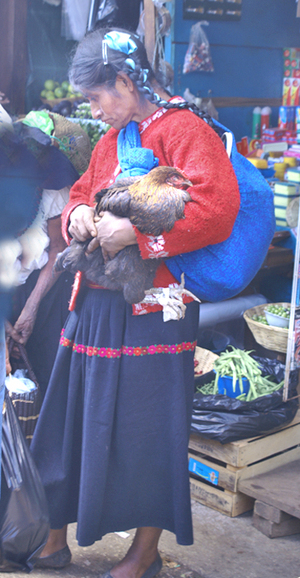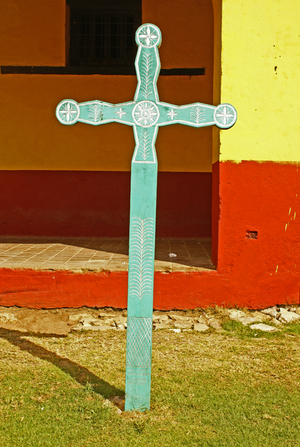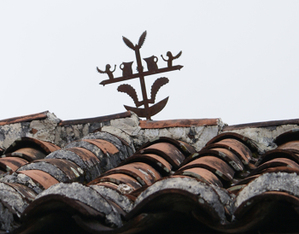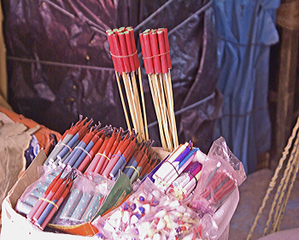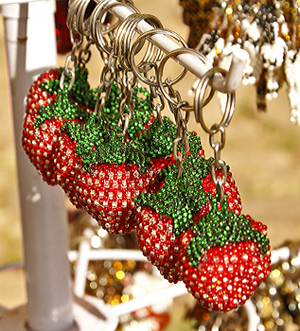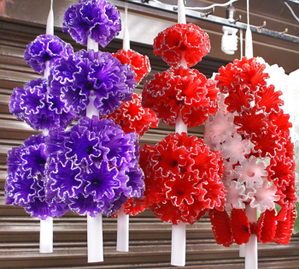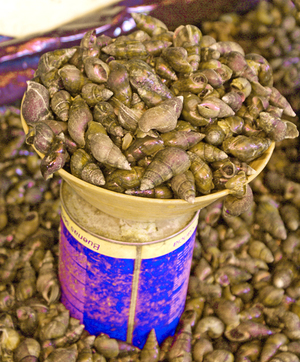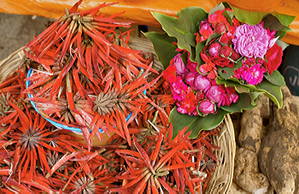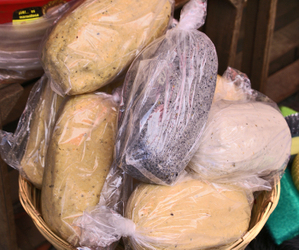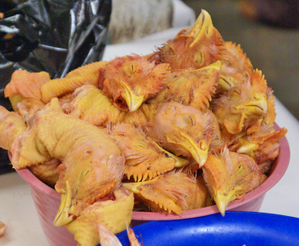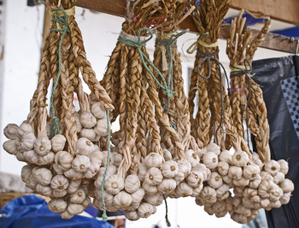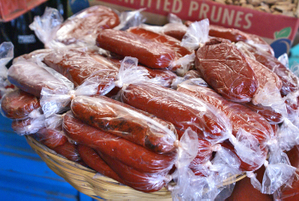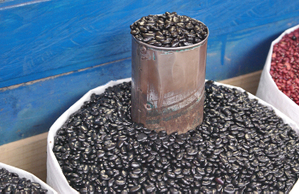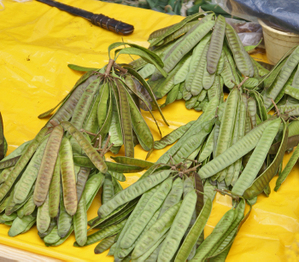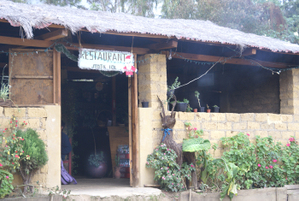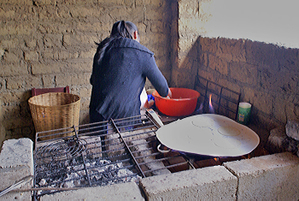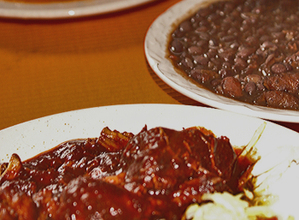Not that kind! What in the world are you thinking!
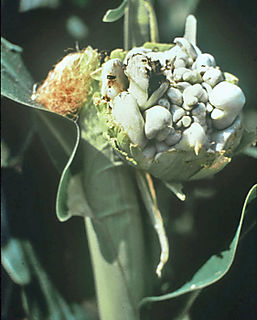
Ustilago maydis, called corn smut, or cuitlacoche.
Mexico Cooks! is rejoicing in a wealth of corn smut, known in Mexico as the delicacy cuitlacoche (or huitlacoche) and known in the rest of the world as disgusting. The word cuitlacoche comes from the Nahuatl word cuitlatl (excrement) and cochi (sleeping). You wanted to know that, didn't you?
Ustilago maydis (corn smut's biological name) is a fungal disease that most often attacks corn before the ear forms. Spores enter corn stalks that have been wounded by hail, insects, or cultivation cuts. The fungus grows inside the corn kernel, distorting and discoloring it, leaving only the husk of the kernel remaining. The fungus winters over in the ground or in old corn stalks left to rot. Smut spores can blow long distances, invading every cornfield in a region. No country is exempt from its infection and losses to the fungus may be as high as 20% of a corn crop. Most of the world's corn growers use every means possible to stave off the infection, but here in Mexico, we love to see the fungus come to market.
Here in Morelia, Michoacán, the cuitlacoche season just started. Some of the vegetable vendors at the Wednesday tianguis had piles of it for sale last week, in amongst the broccoli, chiles, leeks, tomatoes, and the rest of the weekly array in their stands. Twenty-five pesos (about $2.50 US) per half pound seemed like a fair price, so we bought a bag of big juicy-looking fungus and brought it home for comida, our main meal of the day.
The taste of cuitlacoche is deep, rich, earthy, and is frequently compared to truffles. The texture is meaty, similar to a portabello mushroom. The color–well, we don't eat many coal black foods, but it's quite elegant on the plate.
In Mexico, cuitlacoche is sold either on the cob or loose, by the kilo. Once in a great while, fresh cuitlacoche is available in a Latin market outside Mexico. It's said that the canned variety works as well as the fresh, although Mexico Cooks! hasn't used the canned product and makes no guarantees. Look for this variety: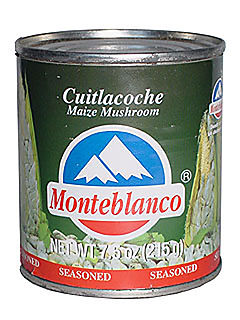
Here's Mexico Cooks!' recipe for our comida muy de la temporada (very seasonal dinner).
Salsa de Cuitlacoche con Espagueti y Pechuga de Pollo
(Cuitlacoche Sauce with Spaghetti and Chicken Breast)
Ingredients for the sauce:
1 large clove garlic, minced fine
2 tbsp white onion, minced fine
2 or 3 strips bacon, minced
3 chiles chilacas or 2 chiles poblanos
250 grams (1/2 lb) cuitlacoche, roughly chopped
Sea salt to taste
Enough chicken broth to thin sauce to coat the back of a spoon
Bacon drippings plus 2 Tbsp vegetable oil
Utensils:
10-inch nonstick sauté pan
Wooden spoon
Measuring spoons
Blender
Procedure:
Roast the chiles on a dry (not oiled) comal (griddle) until the skins are blistered and nearly black. Put them in a plastic bag and twist it shut. "Sweat" the chiles for about 10 minutes. Remove the stems and seeds and peel the chiles. Roughly chop the prepared chiles and reserve for later use.
Sauté the minced bacon until nearly crisp. Remove from pan and reserve with the chiles. Keep the bacon drippings in the pan. Add the oil.
Sauté the garlic, onion, and cuitlacoche in the drippings/oil until the cuitlacoche is soft, about 10-15 minutes. Be careful that the cuitlacoche does not become mushy. It should retain some texture. The mixture in your sauté pan will be inky black.
Put the cuitlacoche mixture, the reserved chiles and the bacon in the blender. Add 1/2 cup chicken stock and purée. The mix should thickly coat the back of a spoon. Add more chicken stock if needed and blend again. Add sea salt to taste and blend briefly. Again, the sauce will be black.
Chicken breasts:
Cut two boneless, skinless chicken breast halves into 1/2" wide strips as long as each breast. Put 2 Tbsp flour and 1/2 tsp sea salt in a plastic bag and shake to mix. Add the chicken breast strips and shake to flour thoroughly. Shake off excess flour. Sauté breast strips in olive oil until they are golden brown. Be careful not to overcook the breast strips. Remove and reserve.
Spaghetti:
I used 1/2 lb fettucine and cooked following package directions.
Plating:
Serves two generously.
Put half the spaghetti on each plate. Divide the cuitlacoche sauce between the two servings of spaghetti. Divide the chicken breast strips between the two plates, laying them across the spaghetti and sauce. Drizzle more sauce across the chicken breast strips.
We all but licked our plates.
So…we've got rough stuff (the chopping), breasts (the chicken), and licking (the plates). I guess this really is smut on the Internet!
Provecho!
